As I detailed in a previous post, (HERE) I recently had the distinctly unique opportunity to document a group of students from the University of Kentucky as they embarked on a  two day “creative study tour” with their professor, Dr. Ryan Hargrove. During the course of the two days, the students met many creative professionals in New York City, to hear about their careers and how they access their own creativity as they work.
Day One brought us an amazing collections of interviews with some of the pre-eminent designers, architects, and illustrators of NYC. Day Two promised to be no different. We arrived at the School of Visual Arts MFA design department to meet with Rochelle Udell and the founder of the program, Steven Heller.
The day turned out to be all about the importance of collaboration, involvement, and contribution:
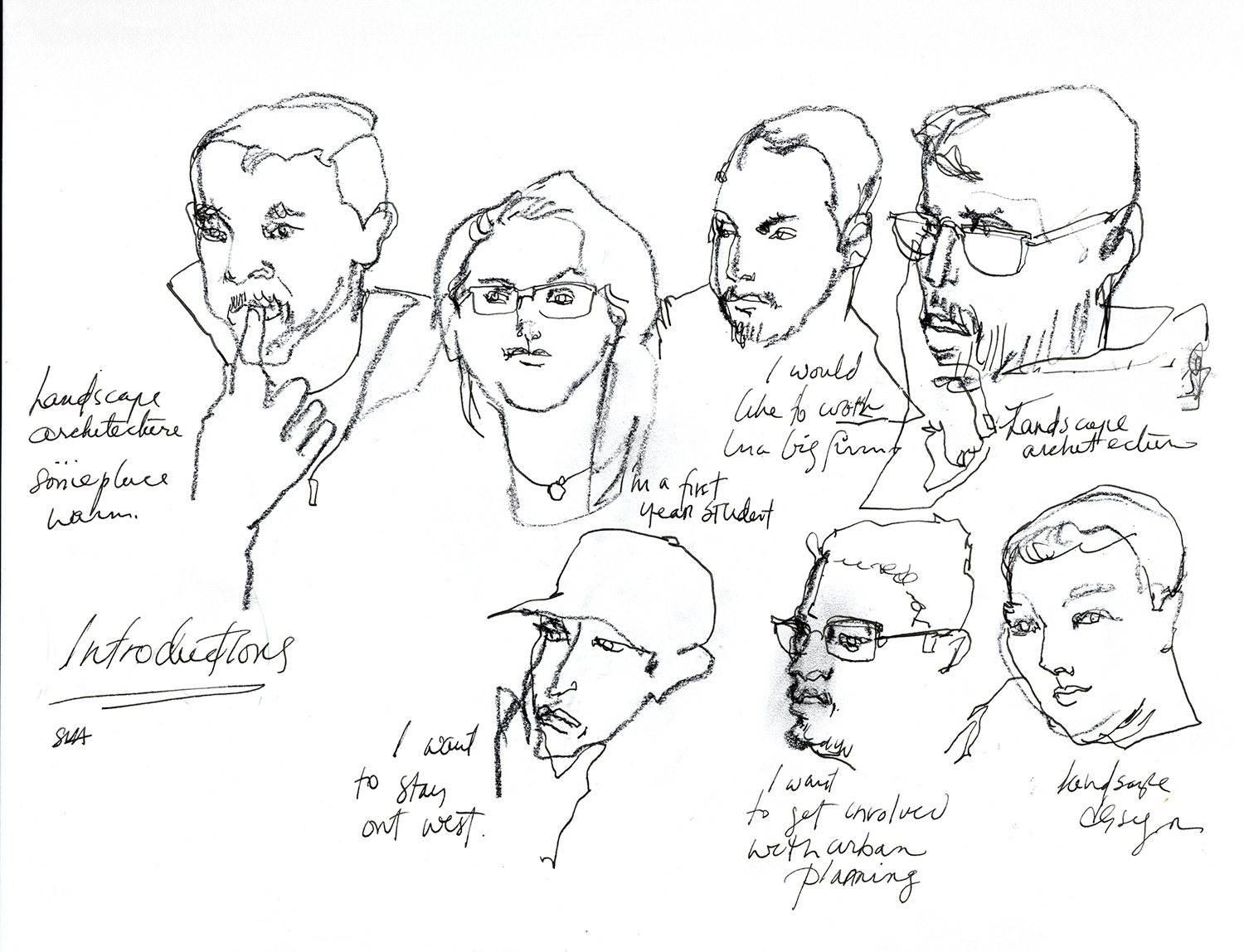
At SVA, Steven Heller brought us into an empty classroom in the MFA design department where he introduced us to Rochelle Udell, a fine artist and former powerhouse creative director in the publishing, beauty, and fashion industries. Her website says that she “creates artwork focusing on subjects that will provoke and inspire the viewer to reflect on the questions and narratives in their lives.” And her discussion with the students did just that.
First of all, Ms. Udell asked each of them to introduce themselves, and tell her what their plans were after graduation. I remember being in that stage of life, and being asked to define my goals and direction was always tough. It’s a time of so much uncertainty and, at the same time, so many possibilities, that it can be daunting. Yet answering that question can bring students some clarity, so I think it was a gift that Rochelle gave them by putting them on the spot like that. First, define what you want in life, then, listen to someone who is on the other side of a fantastic commercial career and hear how they used that answer to their own question to bring them through it. Brilliant.
The students answered in various ways; most of them are involved with studying landscape architecture, but it was interesting to hear their answers, and through them, their priorities. Some had aspirations to work with large firms, some wanted to get involved with society, and others had lifestyle or geographic choices that propelled them.
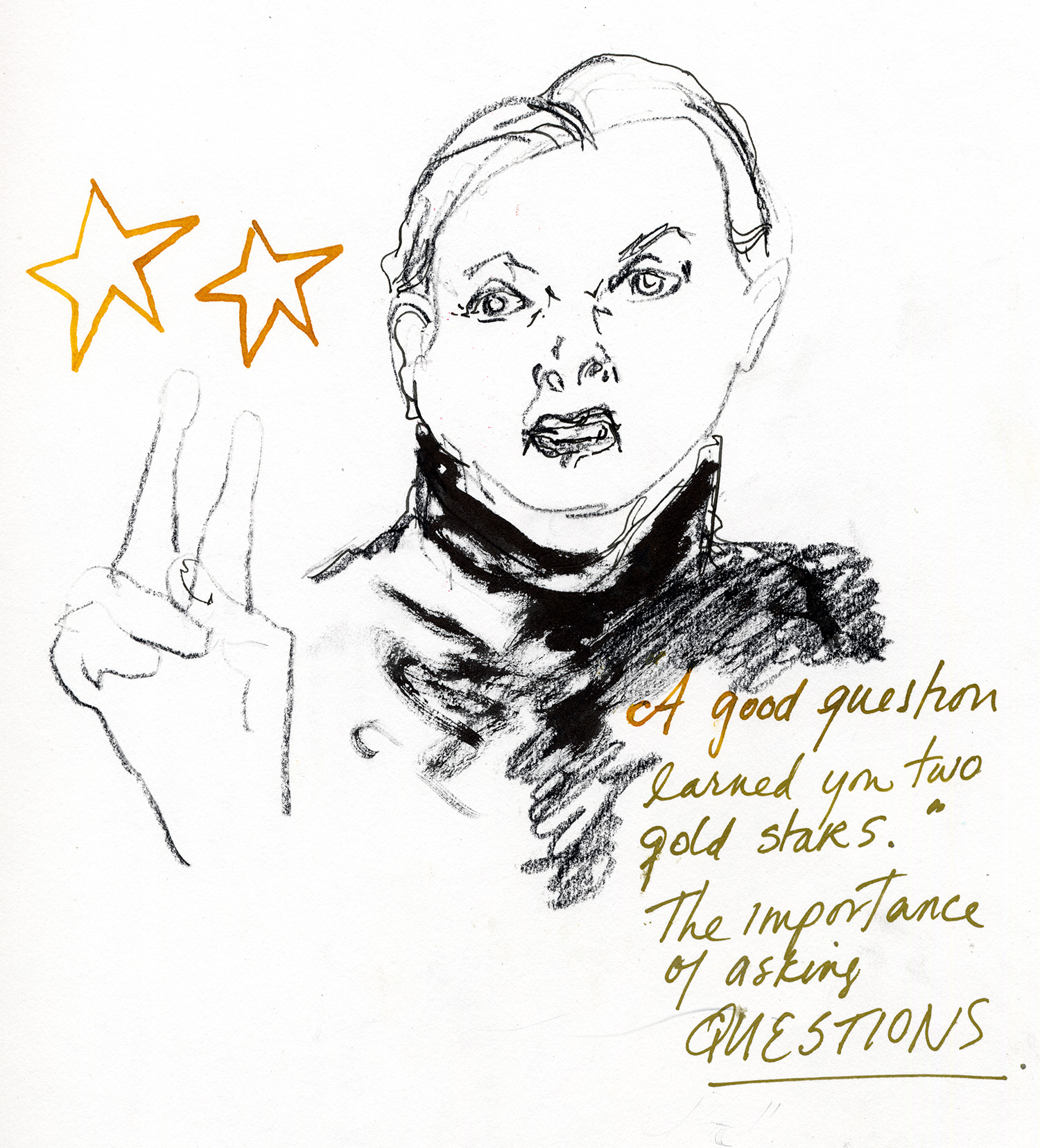
After she’d heard what the students had to say, Rochelle then began telling us her own story. Of primary importance, she said, was asking questions. She talked about her own upbringing, and the teacher who first emphasized questioning everything to her. “A good question earned you two gold stars!” she told them. GOLD pops up often in her art – she has created a series called “gold everyday icons” – so I was not surprised that a gold star was among her earliest motivations. And I had brought a gold pen specifically to draw our session with her. :)
Rochelle talked for a good long time and said MUCH about creativity, culture, and the importance of collaboration. She told the students that through good teachers you learn how to teach yourself (I completely agree) and that the key to the whole thing was to be a lifelong student. She talked culture and how different cultures see and feel things uniquely – with the specifics of fashion to illustrate. She talked about collaboration, and how we need not only the creative people but also the numbers people, the sales people, the strategic people: everyone plays a part. She talked about understanding your own strengths and weaknesses, and the importance of collaborating with people who know what they are doing, and do it well. Essentially, it was all about being involved in the world and self-aware, with a goal in mind.
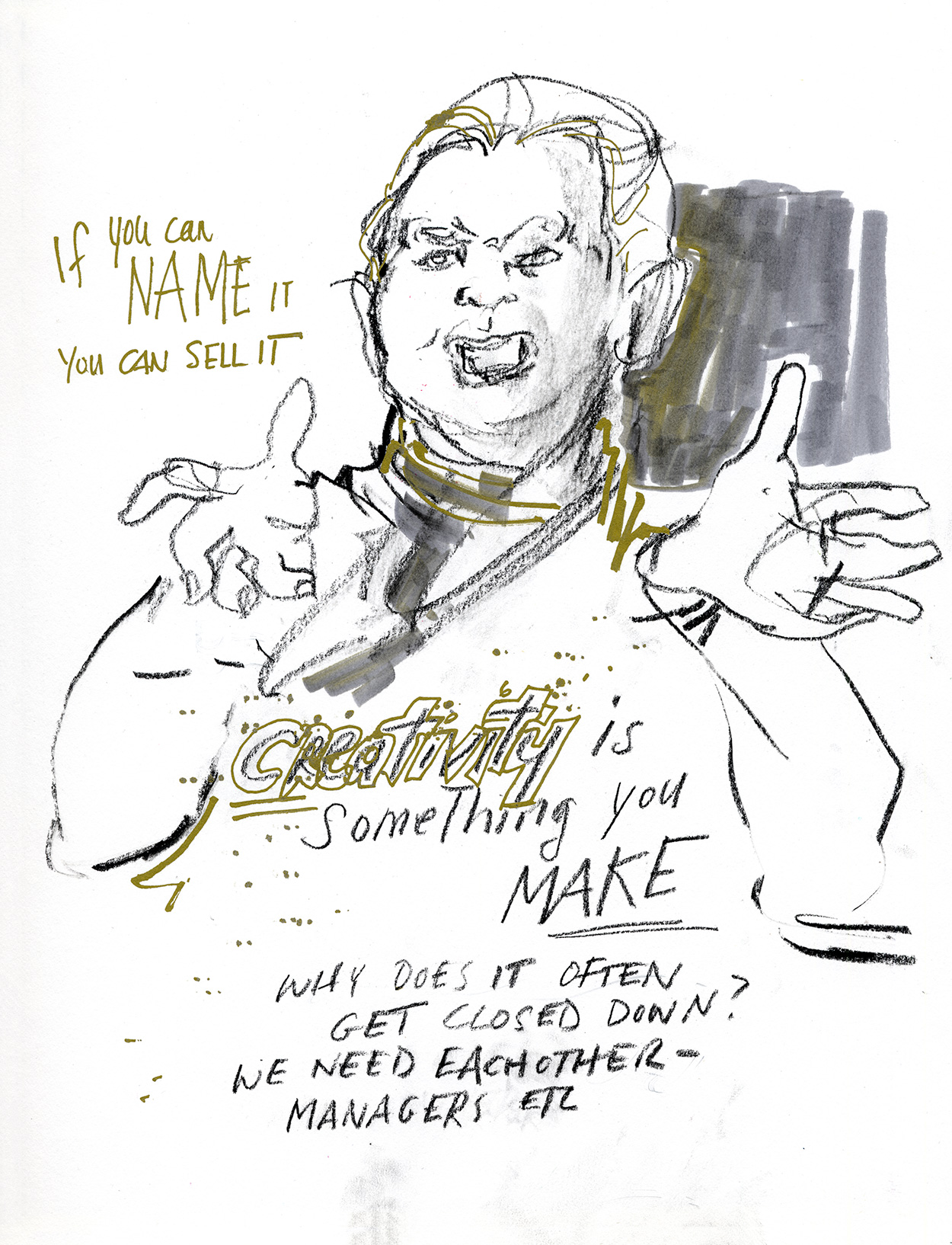
Then she talked about branding, an area in which she has a lot of experience. “If you can name it, you can sell it.” Best marketing advice I’ve ever heard. She talked for quite a bit about this; in fact, she delivers talks on branding professionally (see website) and I can see why. So much common sense and just plain understanding of what people want. Comes from a lifetime of listening to her clients, I imagine.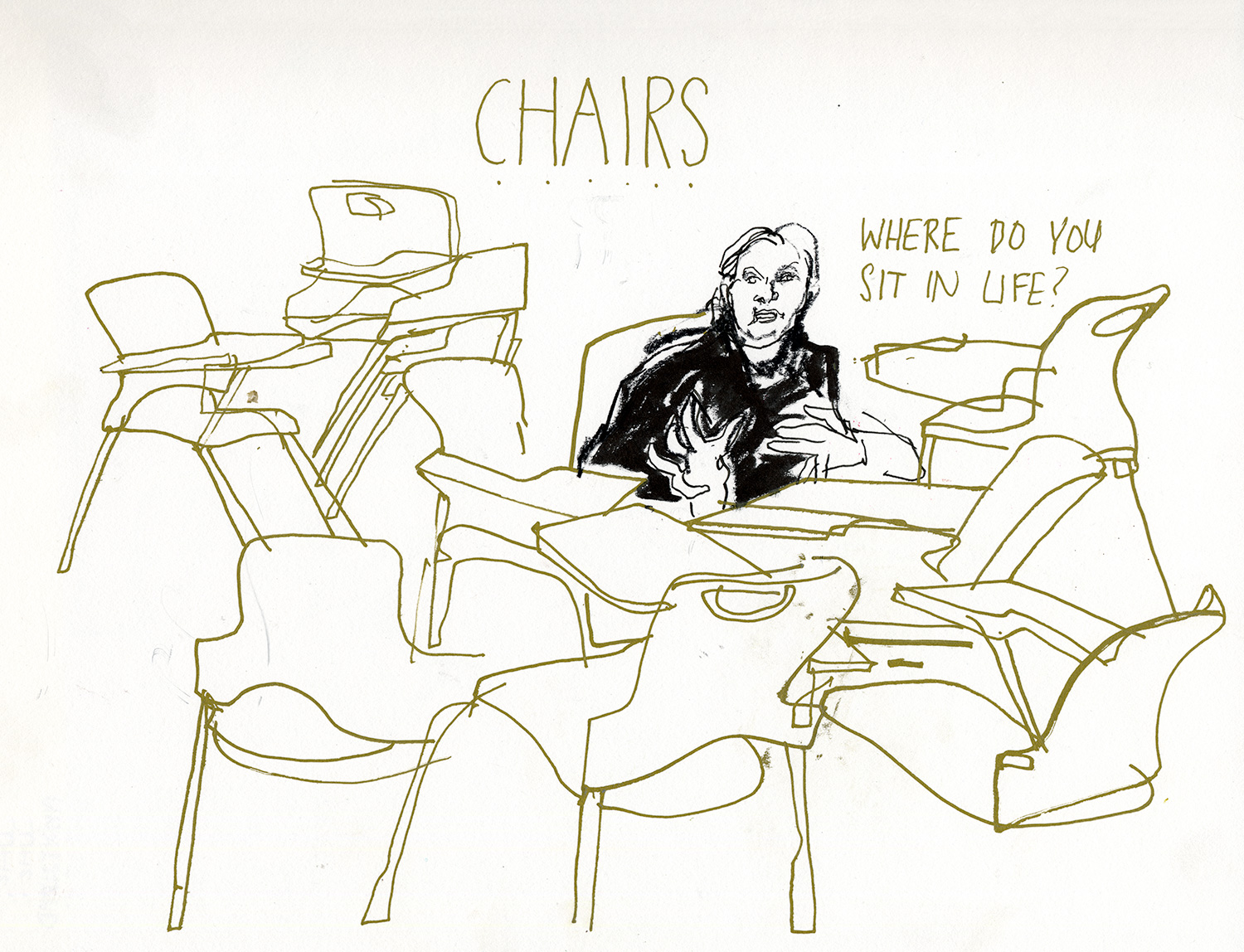 And then she touched on her wonderful chair series, and the symbolism of a chair, asking the students, “Where do you sit in life?”
And then she touched on her wonderful chair series, and the symbolism of a chair, asking the students, “Where do you sit in life?”
It seemed like everything that Ms. Udell talked about revolved around being INVOLVED: listening, paying attention, asking questions, understanding your environment, reacting, collaborating, and contributing. And understanding where you fit in the bigger picture.
Great lesson for life as well as work.
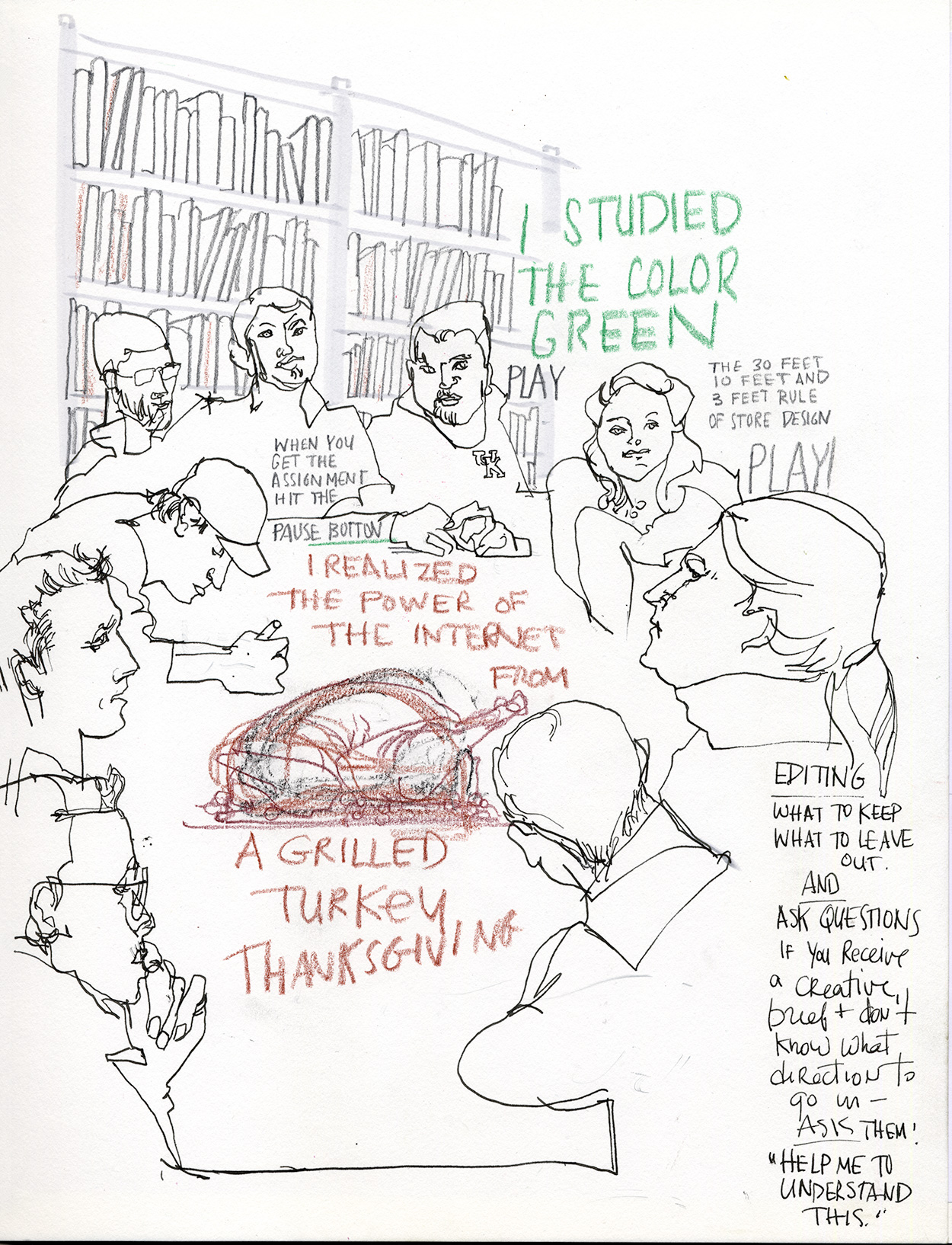
Advice that also, it seems, is the way to stay current in the ever changing world of art and graphics. Rochelle told the students an engaging story about how she first understood the power of the internet, in it’s earliest days. The story involved a grilled turkey for Thanksgiving (I remember when that was a trend) and how she searched out how to grill a turkey online, and was blown away by the sheer number of entries and opinions on the topic she found.
“I realized the power of the internet from a turkey” – what a great sentence! Â Ms. Udell engaged the students with storytelling, and imparted quite a bit of wisdom along the way. Wonderfully inspiring.
At one point during the course of our conversation with Rochelle Udell, a professor had come into the classroom and asked us to move to the library, so his next class could begin. Which was the perfect move, since our next interview was with the director of the MFA program in design, and (I suspect) the impetus behind much of the library’s materials, Steven Heller.
For those of you who may not know, Steven Heller is legendary in the field of graphic design, and an authority on design history. If you have any books of design schools or graphic movements in history on your bookshelves, go take a look at them now. Guaranteed that many of them are authored by Steven. Because of this, I wanted my reportage of our talk with him to be precise and strong in design.
Mr. Heller took the students on a visual tour of his life and career, as well as his own personal interests in graphic design and propaganda. Although I had seen him speak before, the intimacy of sitting around a table while he discussed his life and work was very powerful. He wove us through the fabric of 20th century design, showing the students how it’s intertwined with society and politics. “Designers create things that people relate to emotionally,” he said, and it was clear from his talk that he expresses himself emotionally through the objects he collects and creates. Mannequins are “sculptures of commerce” that sit in his studio and (at times) make his wife jealous. Typefaces have personality and opinion. Symbols are living entities that affect our world. Politics are not something removed from the life of designers but rather something they take part in, and help shape through their knowledge of symbols and the power of graphics.
Steven Heller talked about design as participation in society, echoing Rochelle Udell’s words, and illustrating it with his own work. Images from Screw and other early political magazines that he was involved in were related to blogs and social media posts of today, and Steven stressed the importance of going to the primary sources of the past to do research for tomorrow.
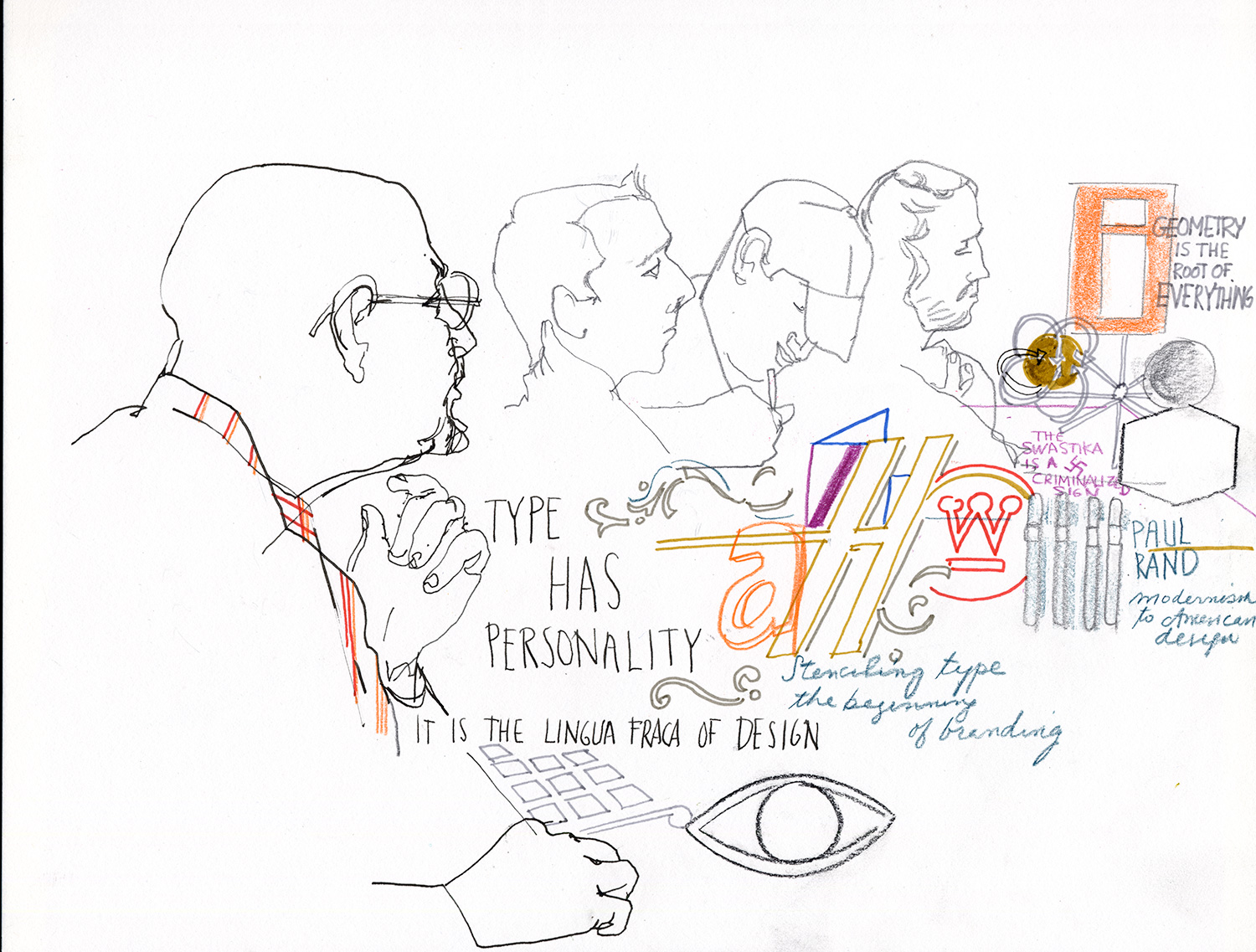
He talked about the origins of modernism, and we visited with design giants of the 20th century such as Paul Rand. Then he de-constructed the history of the swastika for the students, and took that thread right up to the current era, to show them the modes of propaganda at work in the politics of our country today. Clearly anti-Trump, Mr. Heller was quite vocal in his opinions, and steely in his admonition to the students to become involved in the current political discussion, have an opinion, and make that opinion heard. It was a direct request of them, and, especially in that small room, it was powerful stuff.
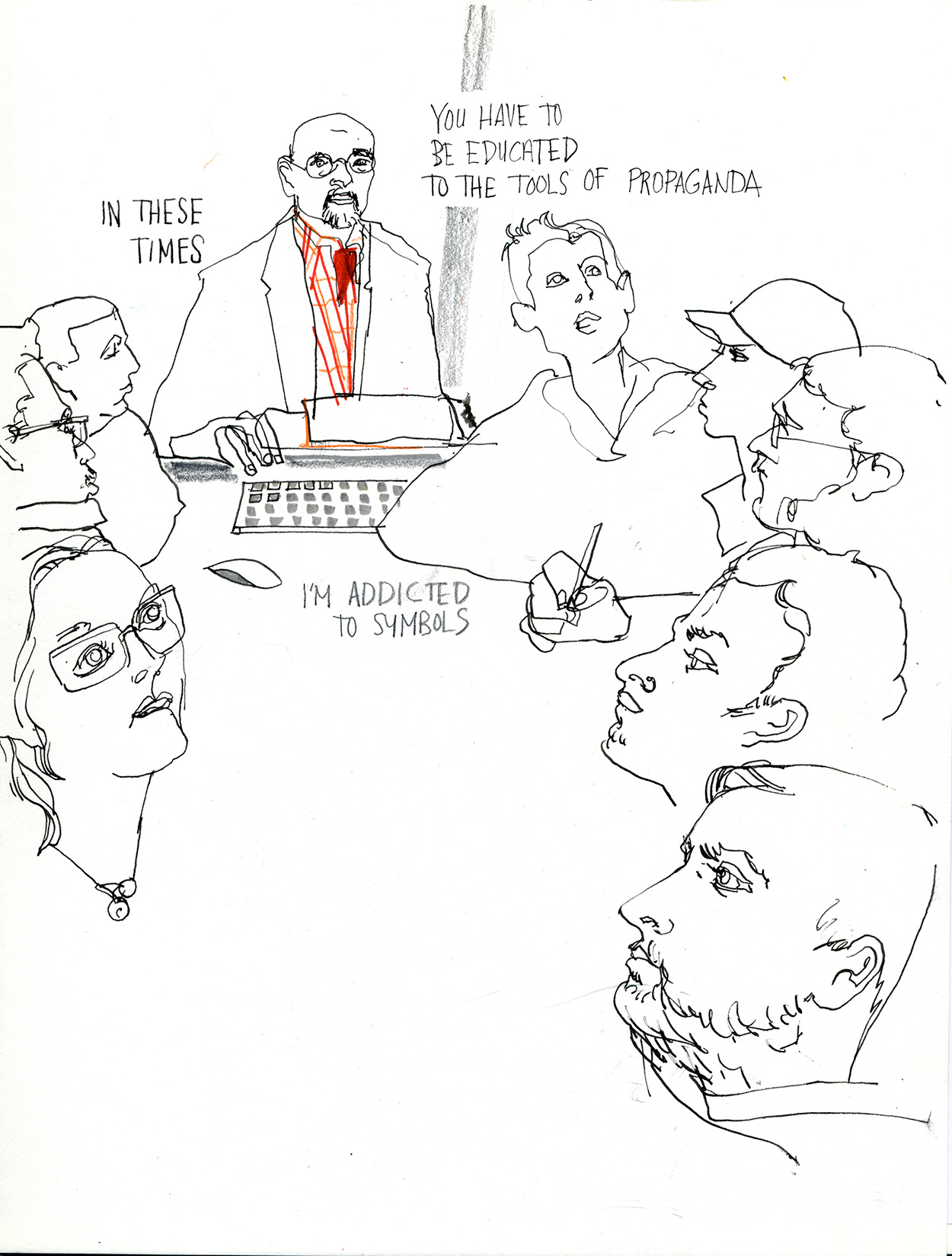
During our quick (but delicious!) lunch of gyros on 23rd Street after the talk, the students were still discussing Mr. Heller’s passion. It had been a morning of strong opinions and calls to the students to become more involved in the world beyond their own sketchbooks. I felt charged up myself!
But the afternoon talks still waited, and there was no time to organize a spontaneous rally. We finished our lunch and moved back downtown to visit the offices of Scape, a landscape architectural firm. I was looking forward to this visit, as landscape design is an area that I don’t delve into at all, and I was curious to see how the process works. For the students, it was a chance to visit a firm that did work directly in line with what they are studying. I brought out my watercolors, as I thought that landscape designers warranted a more organic medium for documentation.
Gena Wirth at Scape took the students right back to high school with her: “I was not asked back to marching band, so I went to landscape design.” The kids laughed when she said it, and we all know that feeling of taking another road when the one you thought you’d be walking on was closed off. (And that new road is usually, of course, the best one for you.) She talked about her experiences at school for landscape design, and her early internship at the fabulous Longwood Gardens in Pennsylvania, which she described as a Disneyland for horticulturists.
Then Gena’s colleague Will DiBernardo talked about his own experiences: as the child of an engineer father and a geologist mother, he said that it was only a matter of time before he got involved with landscape design, which includes both of those disciplines, and a few others. Once they had talked about how they got to Scape, both literally and figuratively, Gena and Will presented a project they had just completed in Kentucky, to design the Town Branch Water Walk, in the city of Lexington (home to the University of Kentucky.)
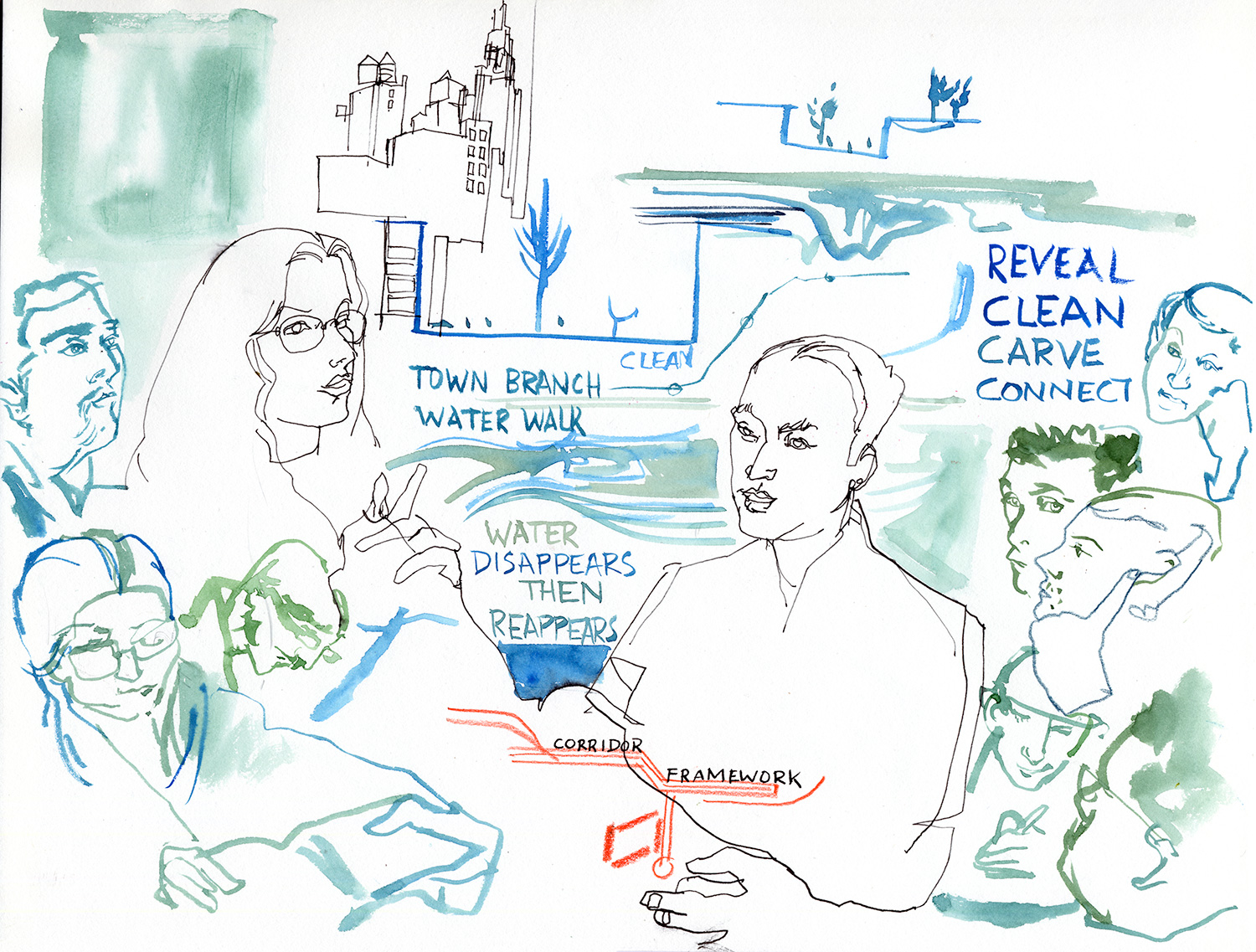
It was so interesting to see this project. The students seemed to be familiar with it: In fact, Professor Hargrove had been involved in the process. After one and a half days of talks from New Yorkers (who are, I must admit myself, often quite NYC-centric in our views of the world) it was nice to see the students relax and get involved with familiar territory. (Pun intended.) It was a big learning experience for me, and I found that the process of research and development of a landscape design is not that unlike the process of research and development for a series of reportage illustration.
Find the narrative of identity – discover the culture of a place – what is the graphic feeling that makes sense – what is important to this place – how do the people use it -Â what is the underlying story of the place?
All of these questions to be answered  – again, the process of paying attention and finding what fits. The preliminary drawings and thumbnails we saw exploring texture, pattern, and shape were beautiful pieces of art in themselves. And it was fun to hear stories of how the Scape team got involved with the people of Kentucky, including a chat about a series of podcasts that Connor, one of the students, had been involved with.
Gena summed up the philosophy very well: “You can have the grandest design possible, but if you can’t imagine how it deals with the conditions that exist today it’s not going to happen.”
- which brings me right back to Rochelle’s “if you can name it, you can sell it.” Common sense is a wonderful commodity! And that these creative people were so willing to share that philosophy with the students was really a wonderful gift.
After we heard about the Water Walk project, Gena gave us a brief tour of the offices, located in lower Manhattan. So many interesting projects on the tables, I could have hung back and asked a ton of questions. Would be such an interesting area to get involved with – landscape design really affects our lives in ways both obvious and subtle. These students are into a great field, I think.
We left Scape and, after a quick stop for coffee at Starbucks, (glad I’m not the only caffeine addict!) we got back on the train and headed out to Williamsburg, to visit the offices of Vice media.
Vice describes itself as an agency that does: “Original reporting and documentaries on everything that matters in the world.” Big goals! And the very youthful team at Vice takes these goals quite seriously. They brought us into a large conference room decorated in what I would call Brooklyn mid-century shabby chic, and introduced themselves to us. It was interesting to hear the various backgrounds that they had; most were just recently graduated from college, and they had studied everything from comparative literature to ethics and public policy. A very eclectic group, and living proof that the road to adulthood is (almost) never a straight line from point A to point B. They described the world of media they are creating as “Viceland” and showed us an energetic reel full of on the street interviews, parodies of YouTube culture, and appeals to the good in all of us. Vice is a youth dominated company with a forward focus, and as I sat there listening to the conversation I couldn’t help but think of Steven Heller and the political magazines of the 1970s. The more things change, the more they stay the same.
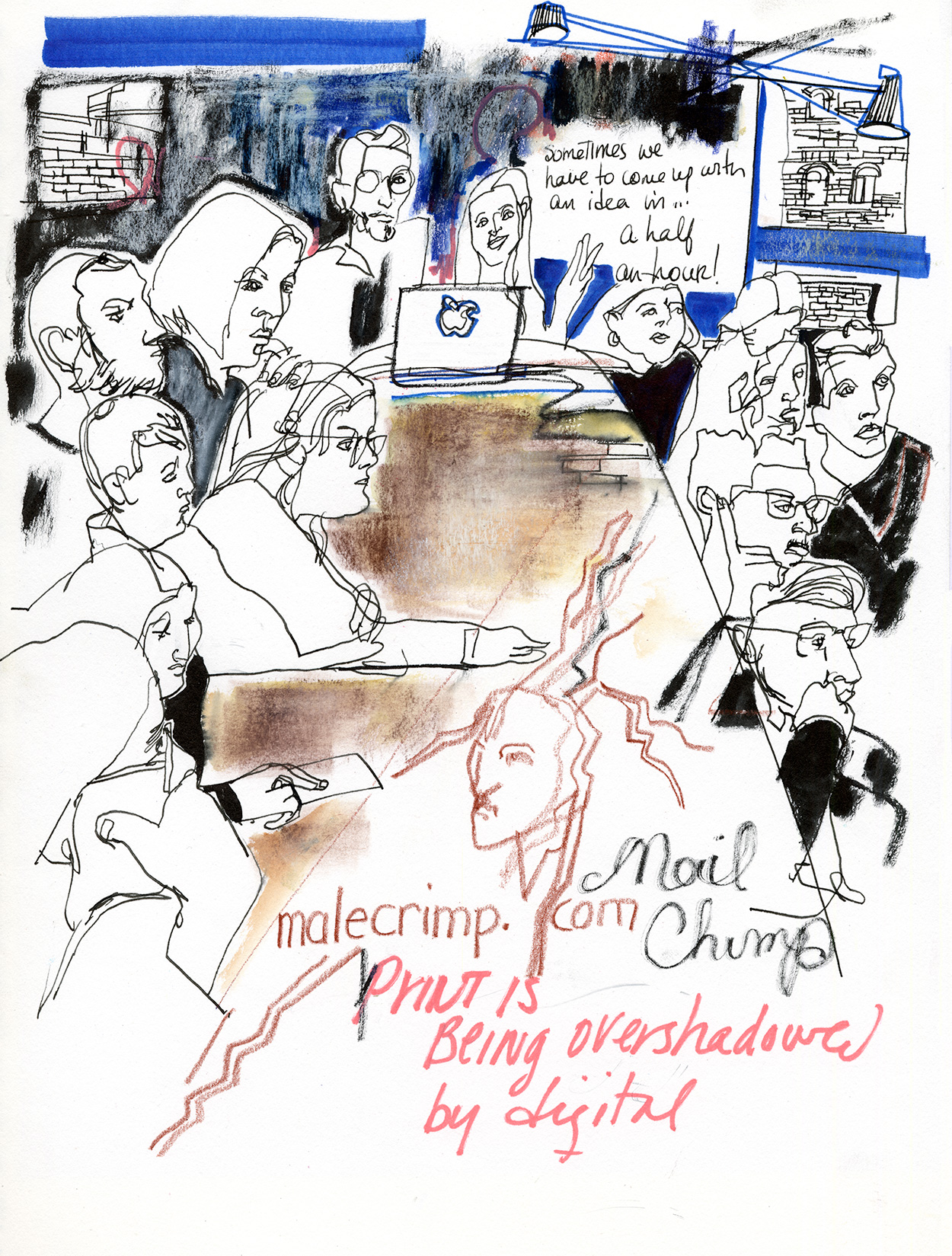
The producers talked about the importance of the IDEA over the execution, and how they were essentially charged with coming up with ideas that were new and fresh for an audience of millennials whose views of media could often be somewhat cynical and distrustful. Their pace of work is quick – “Sometimes we have to come up with an idea in a half an hour!” –  and it seems that the results of their work is examined and analyzed almost instantly. An extremely quick turnover! The students were very engaged in the presentation, and although I am not part of the Vice targeted demographic, I too got involved with their energy and enthusiasm. One of the producers at the table was a YouTube star – I didn’t recognize her, but I did notice her amazing glowing green eyes. She could not stay for the entire presentation, and after she left, one of the students, Amanda, verified who she was. Amanda was VERY excited to have met Keenan MacWilliam, and I immediately texted my 16 year old step-daughter to try for some cool factor rub-off on the encounter. ;)
After the presentation was finished, a few of the Vice producers took us on a brief tour through their cavernous Williamsburg offices, filled with lines of tables and lines of young people working on laptops, creating the content of tomorrow. It looked like a lot of hard work. One of the students, Jacob, made the remark that the place smelled like a combination of ramen and sweat, which made me laugh out loud. The old concept of inspiration being 99% perspiration apparently holds up in the new millennium, with a little ramen thrown in for sustenance.
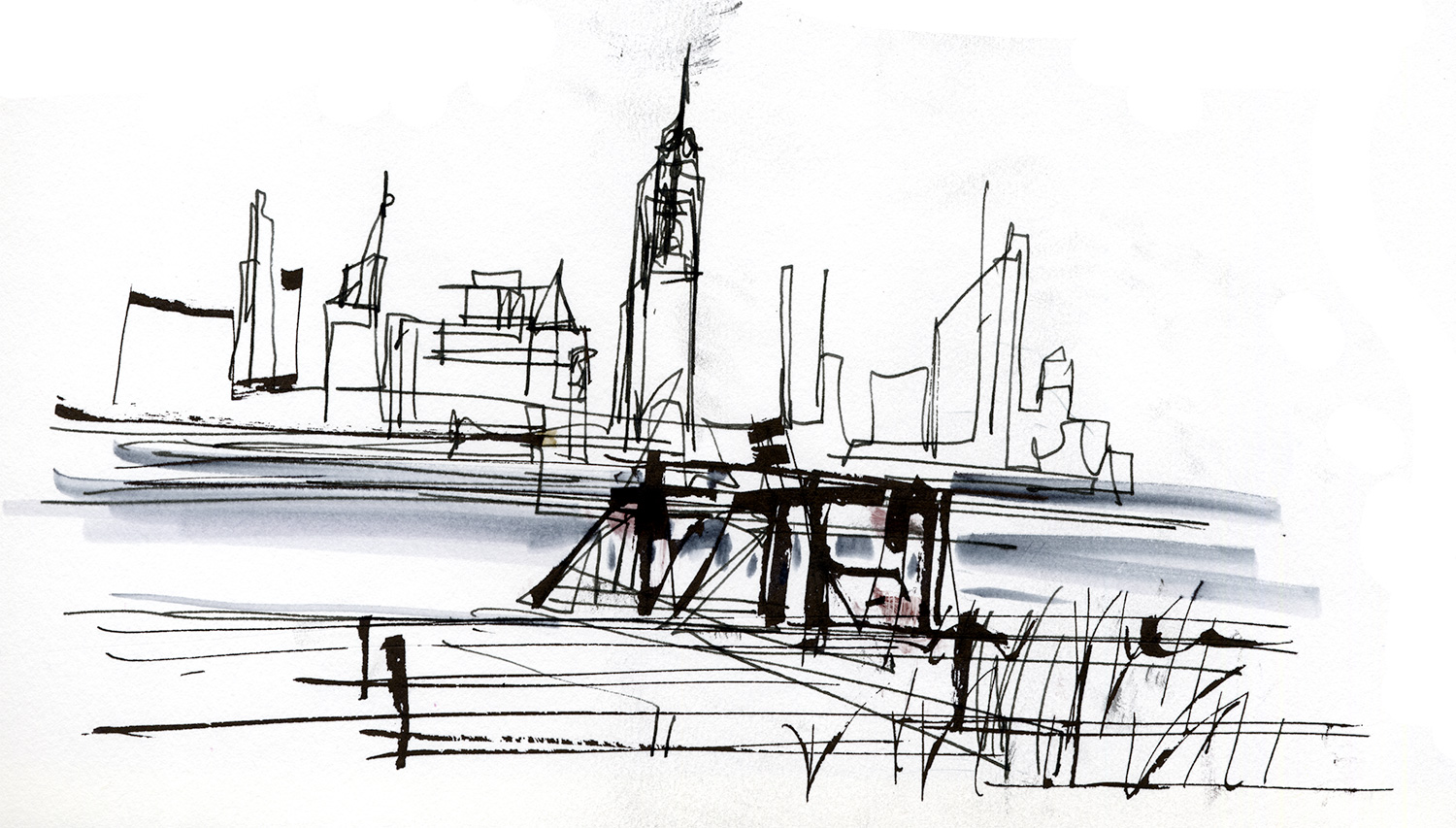 The last stop on the Vice tour was the enviable roof deck and view from Williamsburg of the Manhattan skyline. A view that is so inspiring, and as the students and Vice producers gazed at it I tried to think back at how I would have felt at 19 years old, standing on the rooftop of the coolest media company in Brooklyn, looking across the river to the city that is arguably the cultural capital of the US. And then I realized that I feel the same way now as I did back then. Life is full of so many possibilities, and there is always so much to do!
The last stop on the Vice tour was the enviable roof deck and view from Williamsburg of the Manhattan skyline. A view that is so inspiring, and as the students and Vice producers gazed at it I tried to think back at how I would have felt at 19 years old, standing on the rooftop of the coolest media company in Brooklyn, looking across the river to the city that is arguably the cultural capital of the US. And then I realized that I feel the same way now as I did back then. Life is full of so many possibilities, and there is always so much to do!
I found it hard to say goodbye to my new friends from Kentucky, and insisted on walking them to the ferry back to Manhattan. They had their i-phone GPS and could easily have found it without me, but were too polite to insist, and allowed me to walk them to the Williamsburg pier. As we hugged and said our goodbyes we agreed that they would all be back to NYC some day, and that I would most definitely make my way to Lexington, Kentucky for a visit.
What a great experience with a wonderful group of people. The generosity of all the creative folks who spoke with the group was definitely appreciated by them, and I am so happy to have met the students and had the privilege to document their experience here in my home town. Many thanks to Dr. Ryan Hargrove, the kids, and the many generous creative people who donated their time to the students.
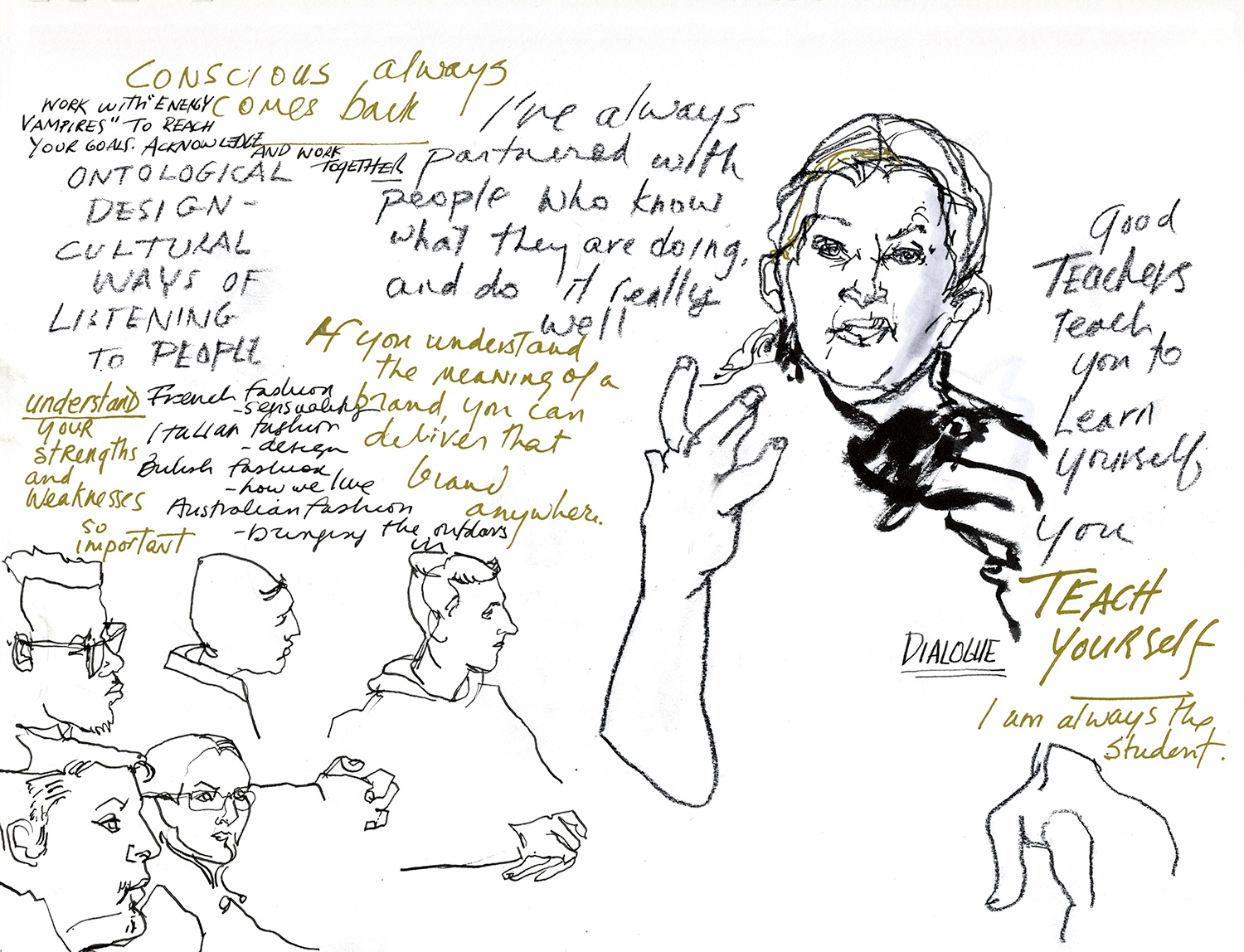
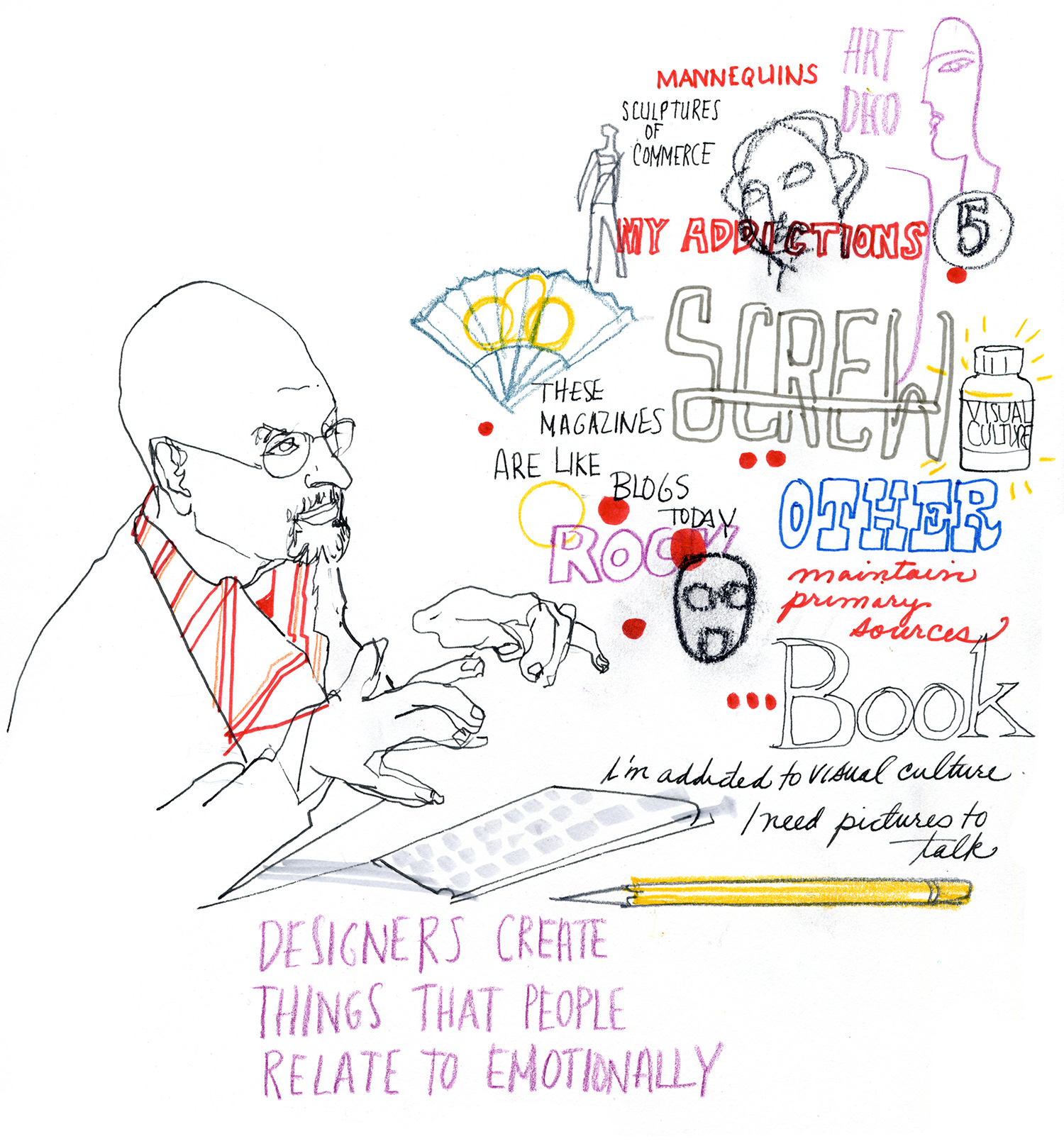
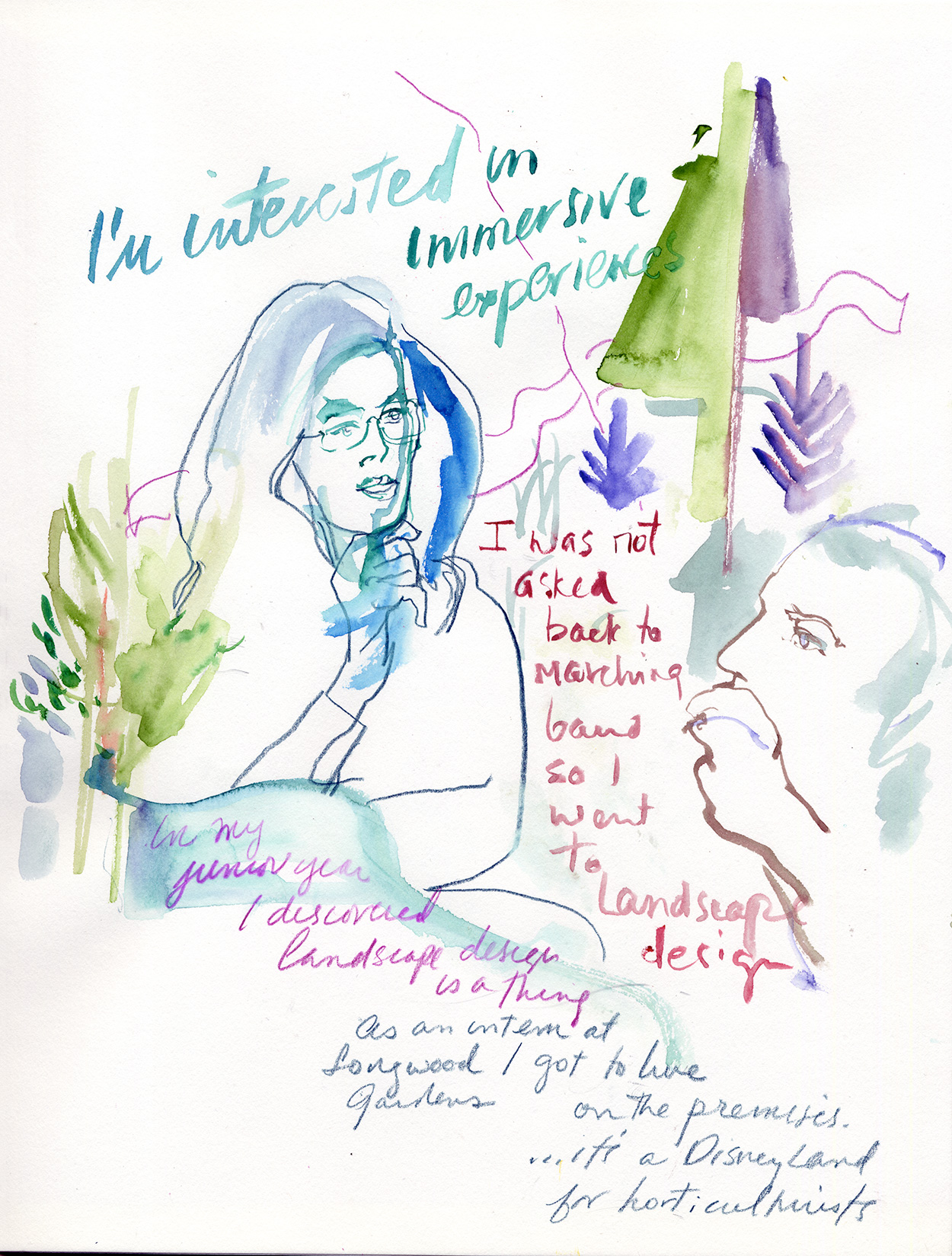
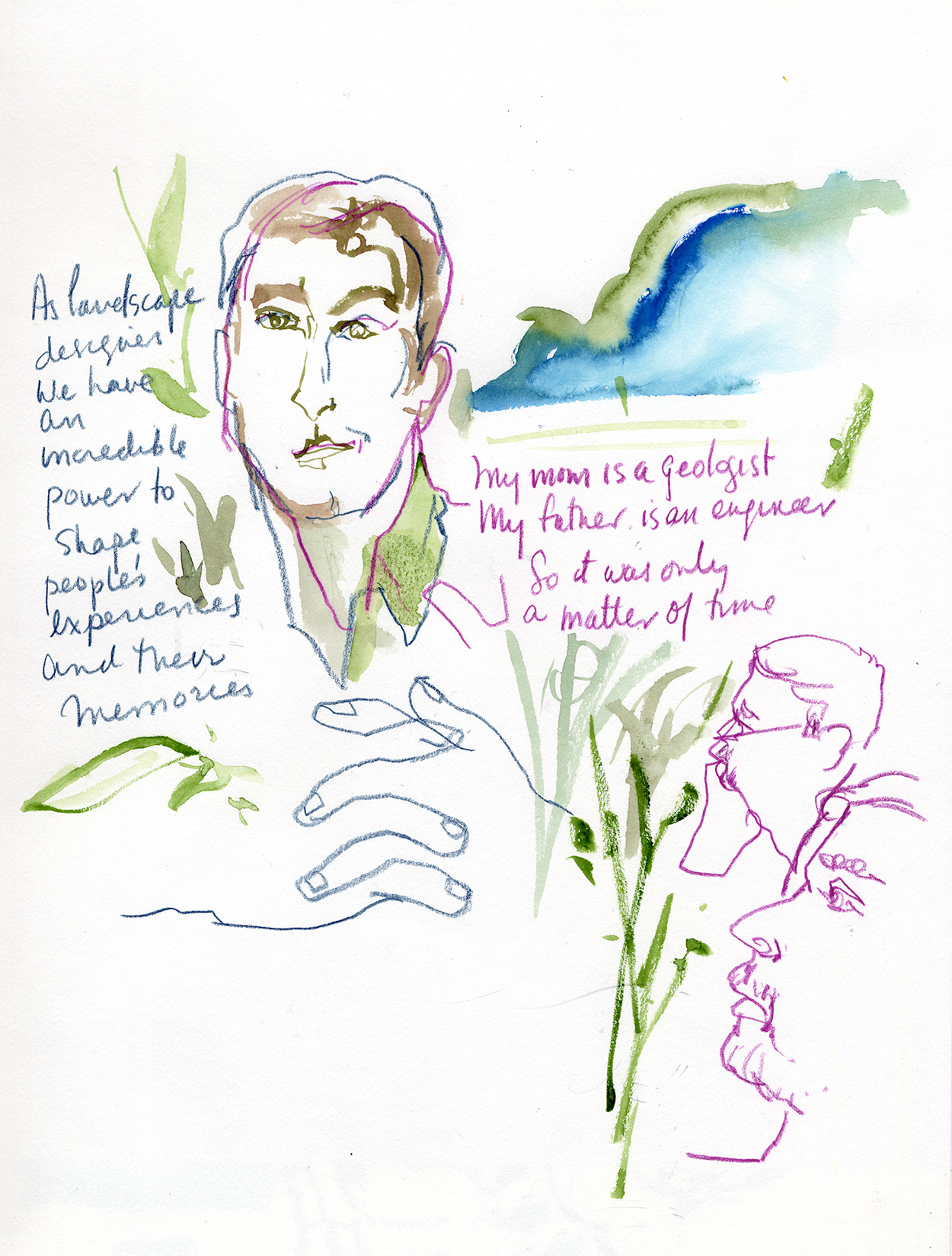
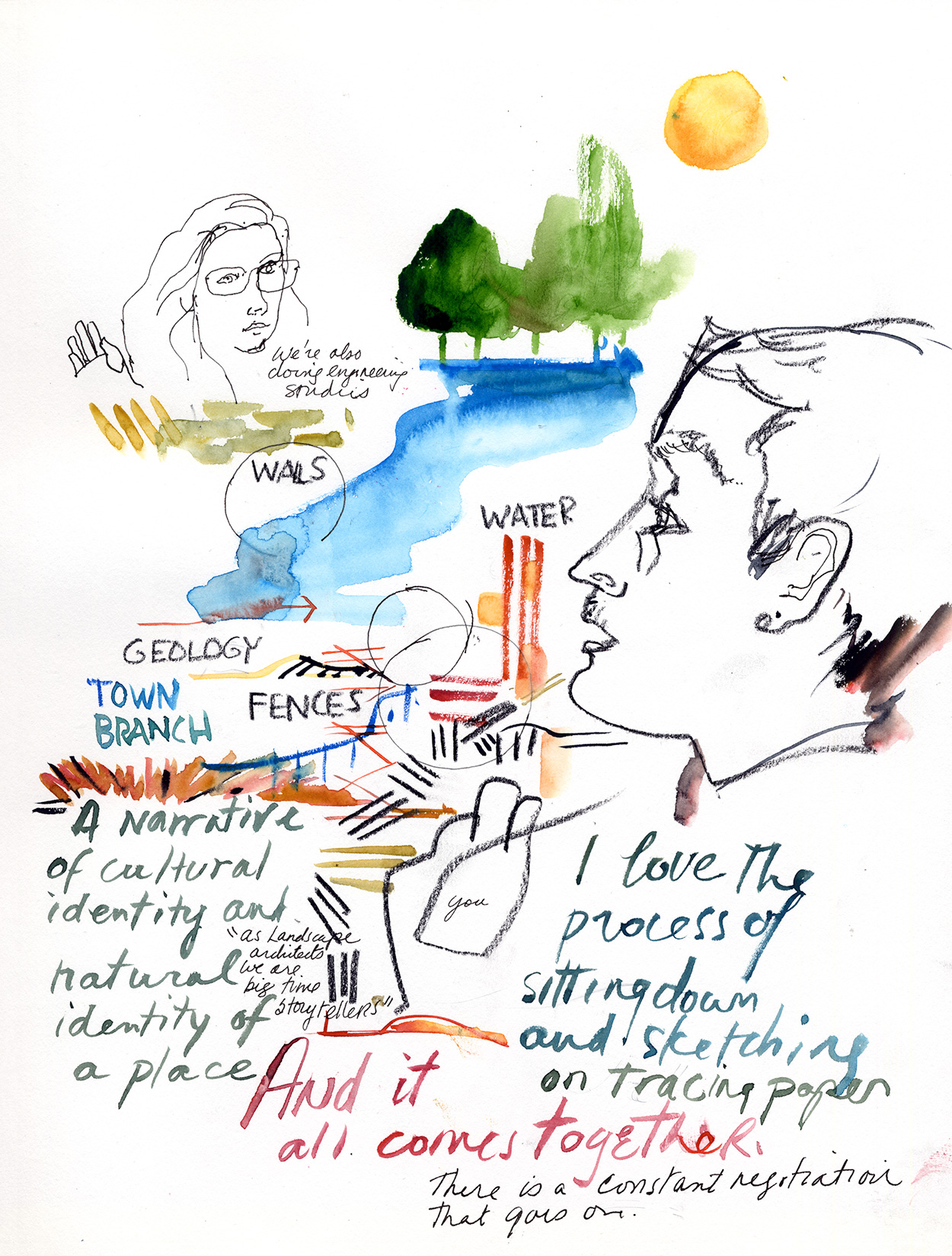
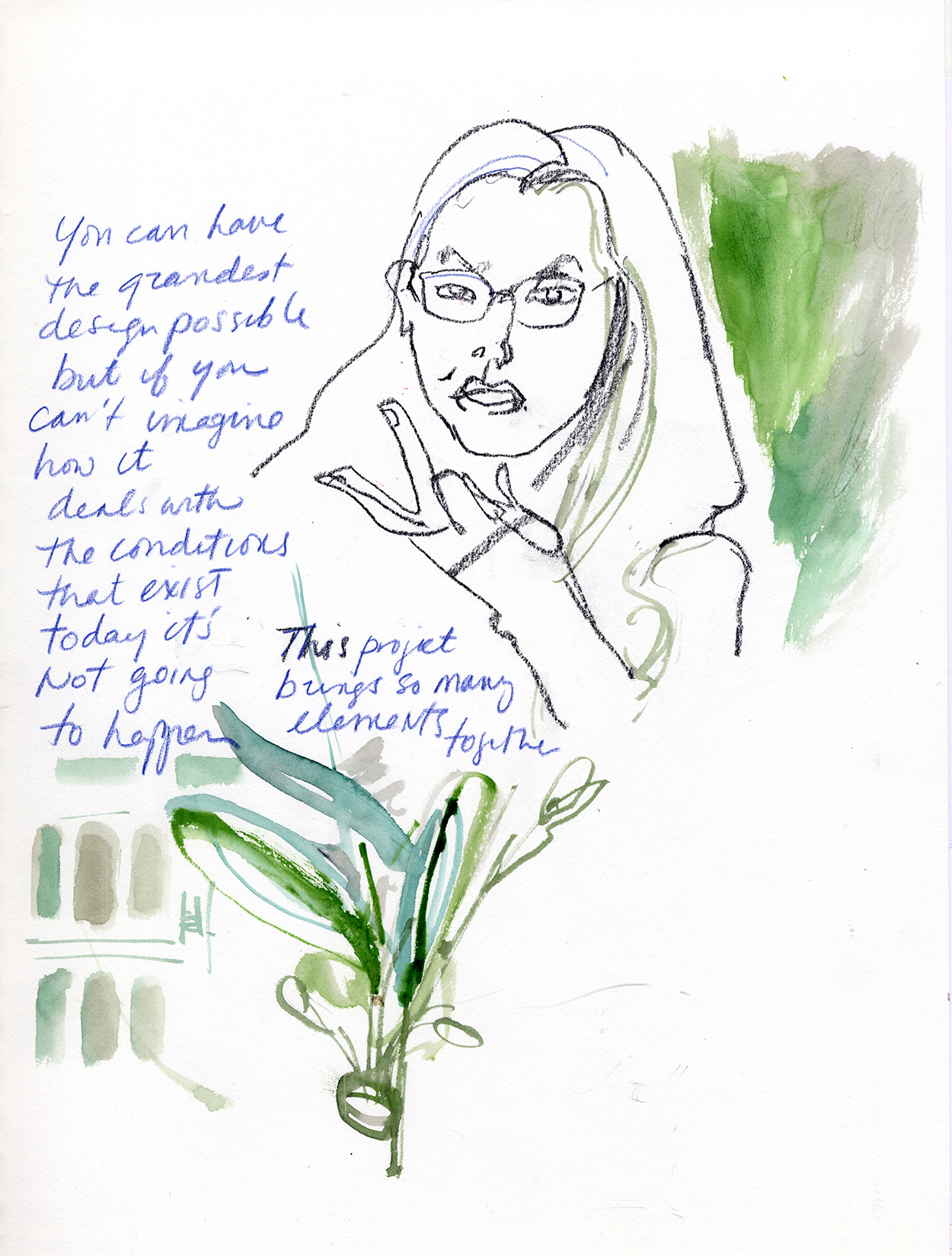
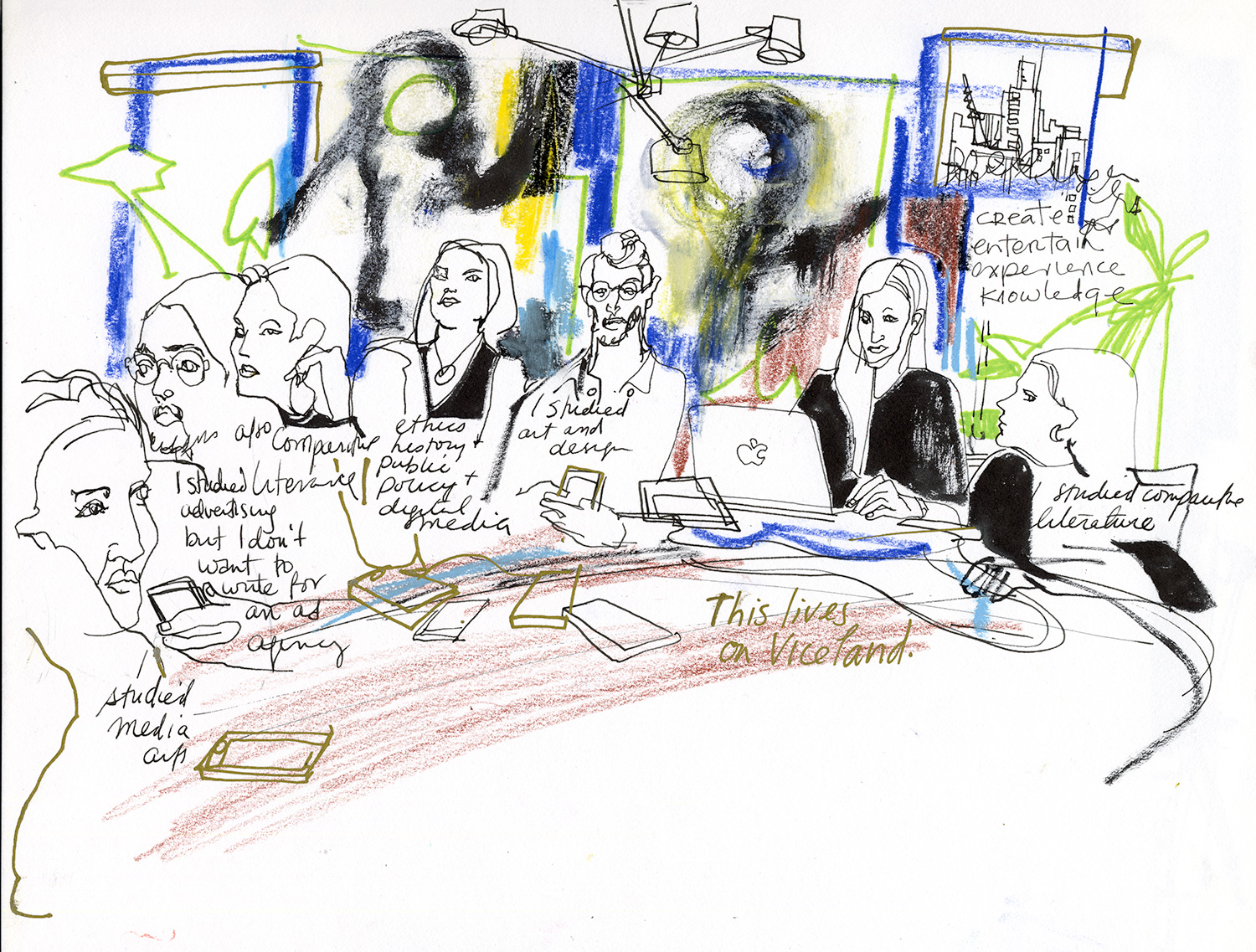
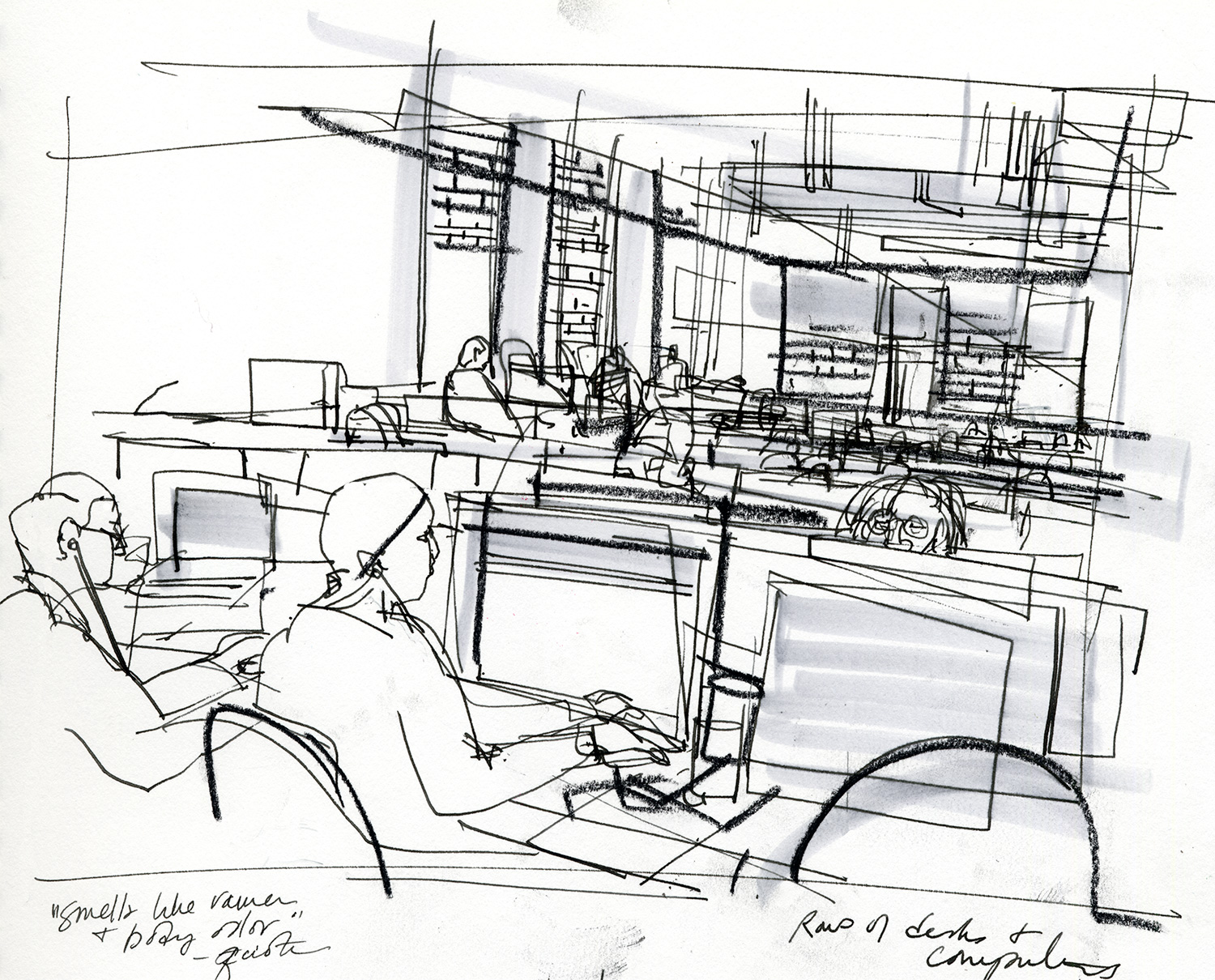
Still excited about meeting her! Thanks again for capturing our amazing trip.
Thank you Amanda, it was my pleasure!